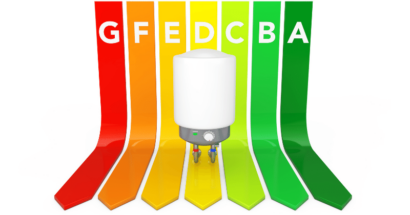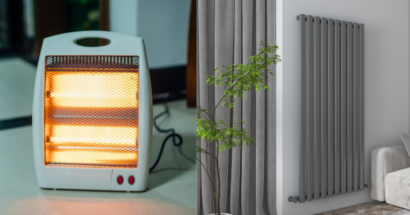Ah, the British weather! One moment it’s sunny, and the next, you’re reaching for the thermostat. As the mercury dips and the need for a warm, cozy home becomes paramount, many find themselves pondering the same question: “How much will it really cost to install a new heating system?” Whether you’re a first-time homeowner or looking to upgrade, understanding the costs involved is crucial. Dive in as we unravel the mystery behind the cost to install a new heating system in the UK and what it means for your pocket and comfort.
What Affects the Cost of a New Heating System?
When considering a new heating system, it’s essential to understand the various factors that can influence the overall cost. From the type of boiler you choose to the size of your property, several elements can either increase or decrease your installation expenses. Let’s delve into these factors to give you a clearer picture.
Your Choice of Boiler
The heart of any heating system is the boiler, and its type and brand can significantly impact the overall cost of the heating system installation. Choosing the appropriate boiler type depends on your home’s size and your specific energy requirements, which is estimated by the number of radiators needed in your space. The boiler’s size, also referred to as its output rating, is quantified in kilowatts (kW), indicating the boiler’s power capacity.
In the UK, the majority of households rely on natural gas for their heating needs. To utilise natural gas, homes need a connection to the local gas grid, as it’s delivered directly from the mains network. Interestingly, about 1.1 million homes in England aren’t connected to this grid. For such homes, many manufacturers provide LPG conversion options. While oil-fueled boilers are the primary alternative to gas, there’s also a growing market for electric and biomass boilers. Here’s a concise breakdown of the prevalent boiler types and their current market prices, excluding installation costs:
Boiler Type / Price Range
Gas-fired Combi boiler – £530-£2,750
Oil-fired Combi boiler – £2,500-£3,130
Gas-fired System boiler – £690-£1,700
Oil-fired System boiler – £1,700-£2,800
Gas-fired Regular boiler – £850-£2,530
Oil-fired Regular boiler – £1,450-£2,590
Biomass – £4,000-£15,000
Electric – £550-£3,220
It’s crucial to choose a boiler that matches the heating requirements of your property. An energy-efficient boiler, while initially more expensive, can lead to long-term savings on your energy bills.
The Size of Your Home
The size of your property plays a pivotal role in determining the cost of the heating system. Larger properties may require more radiators, extensive pipework, and a more powerful boiler, leading to higher installation expenses. For instance, a three-bedroom house with ten radiators and a gas boiler can cost around £8,500 to install central heating.
The Number of Radiators
The number of radiators needed for a property directly affects the overall installation cost. Radiator costs can range from as low as £20 for basic models to higher-end models that can be more expensive. The placement of radiators for efficient heating can also influence costs, but with optimal placement, you can achieve efficient heating and cost savings.
Installation Complexity Level
The complexity of the installation process can significantly influence the labour charges. Factors like the accessibility of the property, existing infrastructure, and any required additional modifications can impact installation and labour costs. For instance, plumber costs for installing pipework and labor can range from £5,750 to £9,000, depending on the system and property size.
While the initial costs of setting up a heating system can seem daunting, understanding these factors can help you make an informed decision.
As we’ve delved into the intricacies of central heating installation costs and central heating system costs, and the factors influencing them, it’s essential to understand the heart of the matter: the different types of central heating systems available. Each system comes with its own set of advantages, downsides, and cost implications. Let’s dive deeper into the various central heating systems to help you make an informed choice for your home.
Gas Central Heating
Gas central heating is a staple in many UK homes, and for a good reason. It’s a system that’s been tried, tested, and trusted for years. But like all things, it comes with its pros and cons.
Advantages of Gas Central Heating:
- Efficiency: Modern gas boilers, especially those that are A-rated, can be over 90% efficient. This means that a significant portion of the gas you pay for gets converted into heat for your home.
- Speed: Gas central heating systems can warm up a home quickly, ensuring you’re not left shivering on those cold winter mornings.
- Cost: Historically, gas has been one of the cheaper energy sources, making it a more economical choice for many households.
- Easy Replacement: If you already have a gas heating system, replacing or upgrading your boiler can be straightforward.
Downsides of Gas Central Heating:
- Not 100% Efficient: No boiler is 100% efficient. Some energy is always lost in the heating process.
- Maintenance Costs: Gas boilers require regular servicing to ensure they run efficiently and safely. Over time, these maintenance costs can add up.
- Environmental Concerns: Gas is a fossil fuel, and burning it releases carbon dioxide, a greenhouse gas.
Cost of Installing Gas Central Heating in the UK:
The cost of installing a gas central heating system can vary significantly based on the size and style of your home. Here’s a rough breakdown:
- Small to Medium-sized Homes: For homes with 10 radiators and a gas boiler can cost around £8,500 to install. The cost of a typical gas boiler, like the Worcester Greenstar 8000 Style 30kW System Boiler, is around £1,300. For a detailed comparison between gas and electric heating, visit this link.
- Larger Homes: For more extensive properties with four or more bedrooms, the cost can rise to between £8,500 and £12,000, or even more. This is because larger homes may require a more powerful boiler and additional radiators.
- Victorian or Older Styled Homes: These homes might have more rooms and might be less insulated, leading to higher costs due to the need for more radiators and a more potent boiler.
It’s essential to consider the capacity of hot water in the boiler and the number of radiators your home will need. A professional assessment can give you a more accurate quote based on your specific requirements.
Oil Central Heating
Oil central heating is an alternative for homes especially for those not connected to the main gas grid. But like every new central heating system, oil central heating has its pros and cons.
Advantages of Oil Central Heating:
- Efficiency: Modern oil boilers, particularly those that are A-rated, can achieve efficiencies of over 90%. This ensures that a significant portion of the oil you purchase is converted into heat for your home.
- Off-Grid Availability: Oil central heating is a boon for those homes that aren’t connected to the main gas grid, especially in rural areas.
- Bulk Buying: With oil, you have the flexibility to buy in bulk when prices are low, potentially leading to cost savings.
- Safety: Oil has a lower risk of carbon monoxide poisoning compared to gas.
Downsides of Oil Central Heating:
- Fluctuating Prices: The cost of oil can be volatile, leading to unpredictable heating bills.
- Storage Needs: Oil requires storage tanks, which can be an eyesore and take up space.
- Maintenance: Oil tanks need regular checks to prevent leaks, and boilers require annual servicing.
- Environmental Concerns: Like gas, oil is a fossil fuel, and its combustion releases carbon dioxide.
Cost of Installing Oil Central Heating in the UK:
The installation cost can vary based on the size and style of your home:
- Small to Medium-sized Homes: For homes with up to three bedrooms, the installation cost, including a new boiler, oil storage tank, and radiators, can range from £4,000 to £6,000.
- Larger Homes: Bigger properties with four or more bedrooms might see costs rising to between £6,000 and £8,000 due to the need for a more powerful boiler and additional radiators.
- Victorian or Older Styled Homes: These homes, often with more rooms and potentially less insulation, might have higher costs due to the need for more radiators and a higher capacity boiler.
Remember, the capacity of the boiler and the number of radiators will significantly influence the overall cost. It’s always a good idea to get a professional assessment for a more accurate quote tailored to your home’s needs.
Electric Central Heating
Electric central heating has emerged as a popular alternative for many UK homeowners, especially those without access to the main gas grid. As with any new central heating system, electric central heating has its own set of advantages and challenges.
Advantages of Electric Central Heating:
- Efficiency: Modern electric heating systems, particularly those that are A-rated, can achieve high levels of efficiency, ensuring that most of the electricity you pay for is converted into heat for your home.
- Flexibility: Electric heating systems can be installed in virtually any property, making them ideal for flats, rented properties, and homes without a mains gas connection.
- Low Maintenance: With fewer moving parts than traditional gas systems, electric heating systems generally require less maintenance.
- Eco-friendly: As the UK’s electricity grid becomes increasingly powered by renewable sources, electric heating can be a more sustainable choice.
Downsides of Electric Central Heating:
- Cost: Electricity, for now, remains more expensive than gas, which can lead to higher running costs.
- Heat Distribution: Some electric heating systems, like storage heaters, might not distribute heat as evenly throughout the day.
- Initial Setup: The initial cost of setting up an electric heating system can be higher than gas systems.
Cost of Installing Electric Central Heating in the UK
The installation cost can vary based on the size and style of your home:
- Small to Medium-sized Homes: For homes with up to three bedrooms, the installation cost can range from £4,000 to £5,500, depending on the type of electric heating system chosen.
- Larger Homes: Bigger properties with four or more bedrooms might see costs ranging between £5,500 and £7,500, given the need for a more extensive system.
- Victorian or Older Styled Homes: These homes, often with more rooms and potentially less insulation, might have higher costs due to the need for a more comprehensive system and potential retrofitting.
It’s essential to get a professional assessment to determine the best electric heating system for your home and receive a tailored quote. Best Electric Radiators can provide an obligation-free quote.
Electric Radiators: The Modern Heating Solution
In the realm of home heating, electric radiators have emerged as a contemporary and efficient choice. These advanced heating solutions, with their sleek designs and smart features, are increasingly becoming a favourite among homeowners. But what makes them stand out, and are they worth the investment? Let’s delve into the world of electric radiators.
Advantages of Electric Radiators:
- Precision Control: Modern electric radiators come with extensive control options, including WiFi and smart controls. This means you can decide exactly when they run, ensuring no energy is wasted.
- Efficiency: Electric radiators convert almost 100% of the electricity they consume into heat, making them extremely efficient.
- Easy Installation: Unlike traditional central heating systems, electric radiators don’t require extensive pipework. They can be fixed to a wall and plugged into an electrical socket.
- Design Flexibility: Available in a range of designs, electric radiators can complement any interior, from traditional to modern.
- Safe and Clean: With no emissions or leaks, electric radiators are an environmentally friendly choice.
Downsides of Electric Radiators:
- Higher Electricity Rates: While electric radiators are efficient, electricity rates can be higher than gas. However, the ability to control when and how they run can offset this cost.
- Not Suitable for Large Spaces: For vast open spaces, multiple electric radiators might be required, increasing the initial setup cost.
Cost of Installing Electric Radiators:
The cost of installing electric radiators can vary based on the size and style of your home:
- Small to Medium-sized Homes: For homes with up to three bedrooms, the cost can range from £150 to £500 per radiator, depending on the model and features.
- Larger Homes: Bigger properties might require more radiators, leading to a cost of £1500 to £3,000 or more.
- Victorian or Older Styled Homes: These homes, with their unique architectural features, might require specially designed radiators, potentially increasing the cost.
In the long run, electric radiators can be a cost-effective choice. Their ability to be controlled extensively means you decide when they run, saving on energy bills. For more insights on electric radiator heating, check out this article. And if you’re wondering how electric radiators can save you money, this piece is a must-read.
Other Items to Consider
In addition to selecting the right boiler and radiators, there are other essential components to consider for an efficient heating system. These include:
Heating Controls: The Brain Behind Efficient Heating
Heating controls are the unsung heroes of a home’s heating system. They play a pivotal role in ensuring that your home remains warm and cozy while optimizing energy consumption. By allowing homeowners to regulate when and how their heating operates, these controls strike a balance between comfort and cost-efficiency. Dive deeper into the world of heating controls with a closer look at room thermostats and their smarter counterparts. Learn more on our website.
Room Thermostats: These are essential devices that help maintain a desired temperature within a specific area of your home. Once the set temperature is achieved, the thermostat signals the heating system to halt, ensuring no unnecessary energy is expended. It’s a simple yet effective way to manage your home’s warmth without constant manual intervention.
Smart Thermostats: A step up from the traditional room thermostat, smart thermostats bring heating controls into the digital age. These devices can be controlled remotely via smartphones or computers, allowing homeowners to adjust their heating settings even when they’re away from home. With features like learning algorithms, they can even adapt to your routine, ensuring your home is warm when you arrive and conserving energy when you’re out. It’s not just about convenience; it’s about harnessing technology for optimal energy efficiency.
Radiator Valves: Fine-Tuning Your Home’s Warmth
Radiator valves might seem like small components, but they play a significant role in the overall efficiency and comfort of your heating system. These valves allow homeowners to regulate the heat output of individual radiators, ensuring that each room achieves the desired temperature without wasting energy. With various types of radiator valves available, it’s crucial to understand their functionalities and costs. Let’s delve into the world of manual, smart, and thermostatic radiator valves.
Manual Radiator Valves: These are the most basic type of radiator valves. They require manual adjustment to regulate the flow of hot water to the radiator. While they’re straightforward to use, they don’t automatically adjust based on room temperature, meaning homeowners need to keep an eye on them to ensure optimal heating.
Smart Radiator Valves: Revolutionizing the way we control our radiators, smart valves can be operated remotely using a smartphone or computer. They allow homeowners to set schedules, adjust temperatures on-the-go, and even integrate with other smart home systems. These valves offer both convenience and energy efficiency.
Thermostatic Radiator Valves (TRVs): TRVs are designed to automatically adjust the flow of hot water to the radiator based on the room’s temperature. They have a built-in sensor that detects the ambient temperature and adjusts accordingly, ensuring consistent warmth without manual intervention.
Valve Type / Estimated Cost
Manual £5 – £20
Smart £40 – £70
Thermostatic £10 – £50
(Note: The costs provided in the table are estimated and may vary based on brand, model, and region. It’s always recommended to check with local suppliers for accurate pricing.)Incorporating these items into your heating system can significantly enhance its performance, ensuring you get the most out of your investment while keeping energy bills in check.
How to Save Money on Your New Heating System Installation
Installing a new heating system can be a significant investment. However, with some careful planning and informed decisions, you can ensure that you get the best value for your money. Here are some practical tips to help you minimize the cost of installing a new heating system:
Your Choice of Boiler
The boiler is a crucial component of your heating system, and its type and brand can significantly influence the overall cost of central heating. Here’s how you can save:
- Research Different Boiler Types: Understand the pros and cons of standard gas boilers, oil boilers, electric boilers, and heat pumps. For instance, while a standard gas boiler might cost around £1,300, an electric boiler can be priced around £1,800. However, the latter might offer better long-term energy savings.
- Compare Brands: Different brands offer varying price points and energy efficiency ratings. Ensure you choose a boiler that matches your property’s heating requirements.
The Size of Your Home
The size of your property plays a pivotal role in determining the heating system’s cost:
- Opt for Zonal Heating: Instead of heating the entire house, consider heating only the rooms you frequently use. This can reduce the number of radiators required and save on installation costs.
- Tailored Solutions: Larger properties might require more radiators and a more powerful boiler. Ensure you get a system tailored to your property size to avoid overspending.
The Number of Radiators
The number of radiators directly affects the overall installation cost:
- Optimal Placement: Efficient placement of radiators can ensure better heating and reduce the number required. For instance, placing a radiator under a window can counteract the cold air coming in.
- Quality Over Quantity: Instead of going for many cheaper radiators, consider fewer, high-quality ones that offer better efficiency and longevity.
Installation Complexity Level
The complexity of the installation can influence labor charges:
- Get Multiple Quotes: Always get quotes from multiple installers to ensure you’re getting a competitive rate.
- Negotiate: Don’t hesitate to negotiate with installers. Some might offer discounts or throw in some extras at no additional charge.
- Consider Financing Options: Some companies offer financing options that can spread the cost over several months or years, making it more manageable.
Government Grants and Schemes: The UK government occasionally offers grants or schemes to assist with installation costs, especially for energy-efficient new central heating systems. Check if you’re eligible for the ECO scheme to get help with a new boiler or insulation.

Final Thoughts
Navigating the world of heating systems can be a daunting task, especially when you’re trying to strike a balance between upfront costs and long-term savings. However, with the right information at your fingertips, you can make informed decisions that cater to both your immediate budget and future energy bills.
Remember, the type of boiler you choose, the size of your home, the number of radiators, and the complexity of the installation all play a crucial role in determining the overall cost. But with careful planning, research, and perhaps a bit of negotiation, you can ensure you get the best value for your money. Moreover, always keep an eye out for government grants or schemes that can assist with installation costs.
Lastly, while the initial costs of installing central heating might seem overwhelming, it’s essential to focus on the long-term benefits. An energy-efficient heating system, though potentially more expensive upfront, can lead to significant savings in the long run.
For more insights on the world of heating, don’t forget to check out our article on gas vs. electric heating. And if you have any thoughts or experiences to share, please leave a comment below. We’d love to hear from you!rr









Leave a Reply